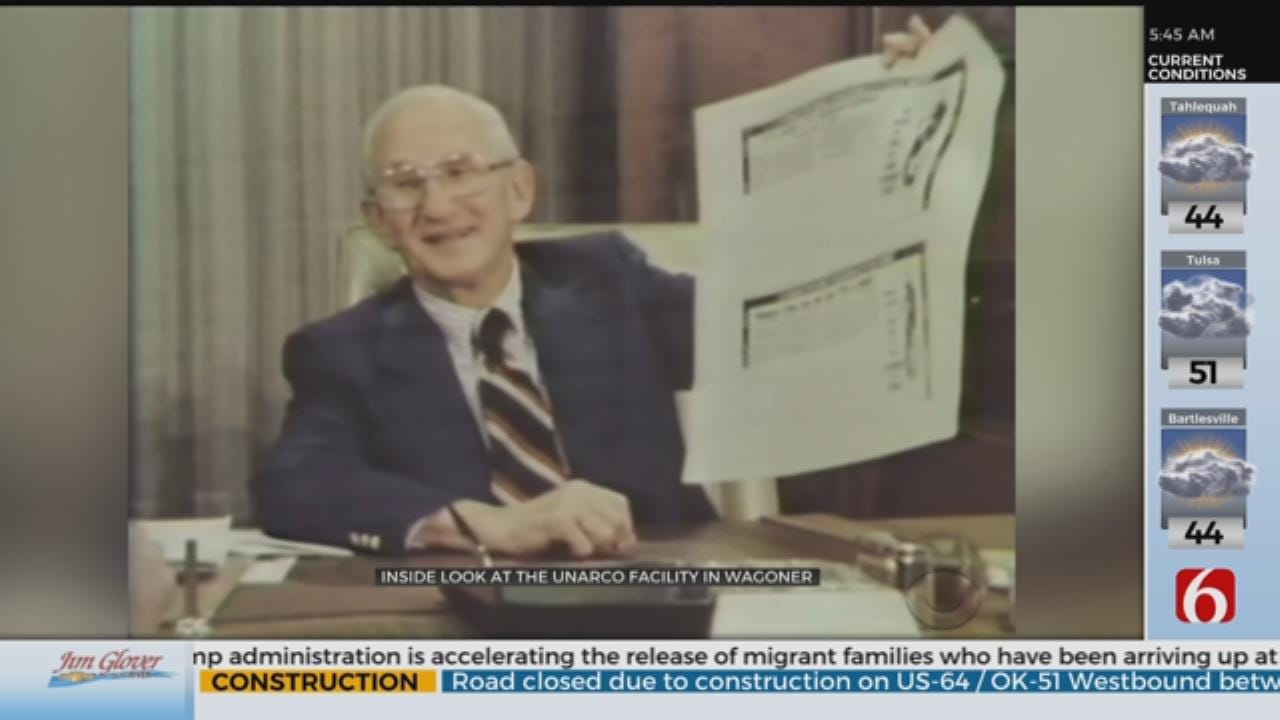A Million Shopping Carts Roll Out Of Wagoner Company Each Year
UNARCO in Wagoner produces around a million shopping carts a year - and supplies them to retailers all over North America and Puerto Rico.Wednesday, April 3rd 2019, 11:21 am
UNARCO in Wagoner produces around a million shopping carts a year - and supplies them to retailers all over North America and Puerto Rico.
They estimate their company’s market share is somewhere close to 50 percent of all carts in use.
UNARCO tells us a News On 6 tour is the first time a television crew has been inside the Wagoner plant. We can't show you every step because the company wants to keep some of their factory secret.
But, early in the process, you start to recognize what this is becoming.
"This is a term we call basket bottoms,” says Misty Murray, UNARCO’s HR Manager. “It's going to go through another process where we're going to attach support wires, then your basket is whole; so, we’re attaching different things, clamping them together and then they're welded together--just like Legos”.
There are 115 year-round employees - double that leading up to Black Friday.
They all take pride in what they do, because it's not hard to imagine what happens if something goes wrong with one of their carts.
"You think about a catastrophic failure in the field, it could be a child in a cart,” says Murray.
And when you talk about taking pride in your what you do, look no further than the longest-serving employee at the plant: John Anderson.
LeAnne Taylor asked Anderson to take us back 42 years when he was looking for a job at the old plant in OKC. They moved to Wagoner in 1986.
Anderson told us he went to the personnel office and filled out an application and was hired the next day.
Anderson describes the works as "fulfilling and busy all the time.”
Eventually the carts begin criss-crossing the massive facility on tracks equipped with hooks. They go to the paint room next.
And then, Murray says, “It gets sealed and cured so it prevents rust at the retailers. We want to give them a good, quality product."
The craziest color a customer has ever ordered, Murray says, was lime green.
At the end of the line, a crew oversees final assembly. That means seat belts, plastic bumpers.
“Making sure that all the wheels are touching the surface, so that way they roll well once they get to the retailer," says Murray.
While robots do help UNARCO crank out about a million carts a year, every cart gets a final check by a person.
But this all started in Oklahoma City, where Oklahoman Sylvan Goldman came up with the concept and developed a design for the shopping cart.
The carts debuted at the Humpty Dumpty grocery stores in 1937.
"He designed this [first one] out of a wooden folding chair to try and figure out a way-because back then they didn't have anything to use to shop in bulk," explains Murray. "There are two left in existence. This one and the one at the Smithsonian.”
Murray told us, at first, the idea of the shopping cart fell flat because neither men nor women shoppers liked them.
Goldman talked about it in a 1977 On The Road interview with CBS' Charles Curalt.
"Men didn't want to push them,” Murray explains. “It resembled too much of a baby carriage. And that was not cool back then."
Goldman found that women didn't like carts because they were already pushing around baby carriages.
Eventually, he said advertising photos of a model pushing shopping carts turned the tide in the invention’s favor.
And Sylvan Goldman never stopped innovating.
The nesting invention is the savior of cart corral workers everywhere.
Murray says, "So this is the first nesting design to where the carts could store inside of each other; “[he] just kept evolving."
“You can't help look at it in pride when you see them in the most outlandish places, where you wouldn't think there's any way on God's green earth there'd be a shopping cart," said Sylvan Goldman in a 1977 interview.
More Like This
April 3rd, 2019
January 2nd, 2025
September 29th, 2024
Top Headlines
May 5th, 2025













